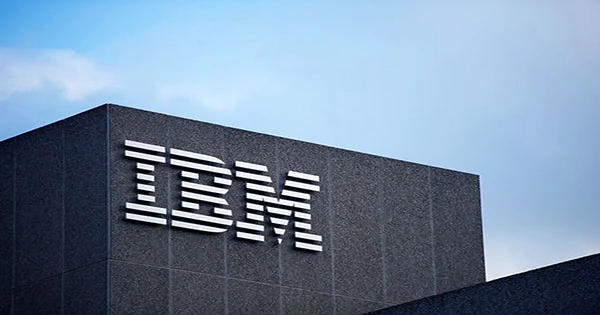There were several hard years for IBM, including a period from 2012 to 2017 when the corporation logged 22 consecutive quarters of falling revenues. Significant growth was difficult to come by in the years after that. Big Blue, on the other hand, has begun to shift the narrative for the second quarter in a row, with a sales increase of more than 8% in the first quarter. That rate of increase was even faster than IBM’s rise of 6.5 percent in Q4 2021, which TechCrunch characterized as “accelerating growth.” (IBM increased by 0.3 percent in Q3 2021, basically staying the same.)
IBM shares, which had gained more than 2% in normal trading yesterday, climbed again this morning, gaining more than 2% in pre-market trading. As we wrote this, it was up seven points in early trade. Red Hat, which IBM purchased for $34 billion in 2018, led the way with revenue growth of 18 percent in the first quarter compared to the same period last year. When the technology behemoth purchased Red Hat, the goal was to bring the historic company into the current era, allowing it to operate as a quasi-independent entity while benefiting from the growth engine. It looks to be operating as intended, with Red Hat outperforming the competition.
The purchase of Red Hat was made with the intention of allowing IBM to serve as a consultant rather than competing directly with Amazon, Google, and Microsoft in the public cloud infrastructure market. The aim is to be the firm that helps clients maintain things operating between on-premises and public cloud operations; it’s not a groundbreaking concept, but it appears to be working. Consider that IBM’s hybrid consulting business rose 24 percent in the first quarter, even faster than Red Hat, demonstrating that it can sell both software and services, which has been an IBM business characteristic for years, including during the company’s protracted downturn.
Now, CEO Arvind Krishna’s revamped strategy looks to be working to the company’s advantage. Can the firm maintain this moderate pace in the next quarters, allowing for reasonable — if not spectacular — growth?
The future appears to be brighter. IBM predicted “constant currency sales growth at the upper end of the mid-single-digit range” in the release of its results. What does this mean in terms of investor expectations? According to Yahoo Finance, the average analyst forecast for the firm is $60.69 billion in sales this year, up 5.8% from $57.35 billion in 2021. Simply said, IBM is expecting growth that looks to be higher than market expectations. Overall, IBM’s hybrid business rose by 17% in the first quarter, producing over $5 billion in revenue, but it wasn’t all good news.
Infrastructure revenues, for example, were unchanged at $3.2 billion (inclusive of sales to Kyndryl, the infrastructure consulting business it spun out in late 2021). IBM also revealed that it suffered a little loss as a result of Russia’s invasion of Ukraine and that it was suffering the higher cost of doing business, particularly in terms of human resources. Patrick Moorhead, founder, and chief analyst at Moor Insight & Strategies believes the corporation will continue to thrive in the coming quarters, particularly with the adoption of the new z16 mainframe. “I believe IBM can improve in the cloud, but it was a strong quarter.” When the z16 platform demand kicks in, I’m anticipating a really good next two quarters,” Moorhead told.














